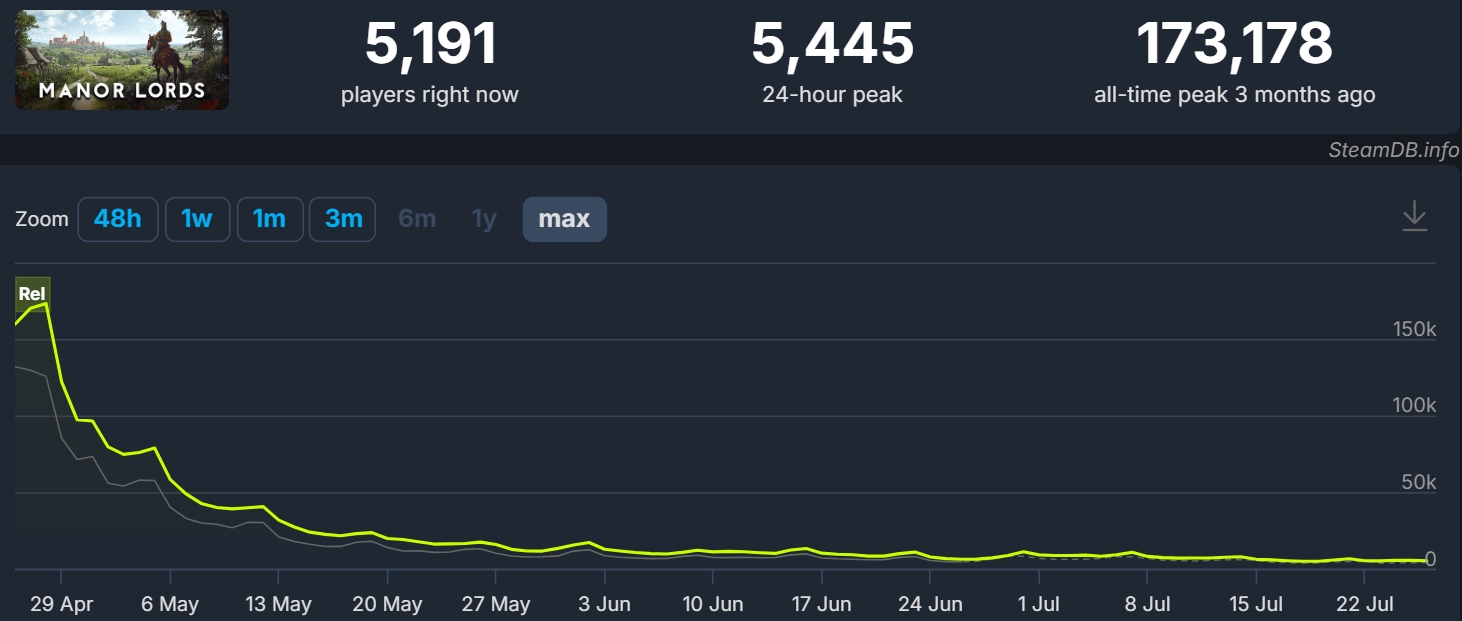The number of concurrent users (CCU) is often the only publicly visible data for most titles in the market. Here is what Hooded Horse CEO Tim Bender thinks about this metric and its limitations.

Manor Lords
Bender told a16z Games, which published a great piece on the CCU issue last week, that Manor Lords has already surpassed $60 million in gross revenue on Steam since its Early Access launch on April 26.
The game sold over 2 million units in less than three weeks, with Bender now saying that it added another 250k copies in the last month. So it is a huge commercial success, especially for an EA indie title in the strategy genre.
Its strong launch was accompanied by over 173k peak concurrent players. The CCU has since plunged to daily peaks of about 5,000, which is a common situation for most single-player titles (and keep in mind that Manor Lords is still in Early Access).
CCU charts can easily spark speculation, with Bender calling them “very blunt instruments.” You can have a game with high CCU generated by core players who have put hundreds of hours in it, while another game with lower numbers continues to sell well due to an influx of new users. “For a premium game, the latter is a better situation,” Bender explained.

The Hooded Horse head thinks there are other metrics that are worth paying attention to. For example, the median playtime can give developers a more complete picture of whether a game is doing well over time and “form a strategy around it.”
Another issue, according to Bender, is that people try to apply the live service model to indie games. While maintaining high concurrent player counts, scheduling content updates, and retaining the audience is important for GaaS titles, this strategy may lead smaller devs in the wrong direction.
“One way is by telling you that you should save content for post-release updates,” Bender said. “And that would be an extremely big mistake. With a premium game, you don’t care that much about saving content.” Instead, devs doing Early Access should make the best first impression possible and give players enough reasons to come back at 1.0 launch.
Bender added that when a smaller game like Manor Lords reaches that many concurrent players at launch, it means it has broken out beyond the core audience of its genre. So these titles “will naturally have a much bigger fall off in concurrent users. while still having very strong sales.”
According to Bender, the key is to work with your core audience and focus on metrics that can tell you whether you, as a developer or publisher, are doing a good job, e.g. reviews, playtime, feedback, etc.
For a deeper dive into the topic and more insights from Avalanche Studio Group’s Kristoffer Touborg and former League of Legends director of strategy Areeb Pirani, read the full a16z Games article.
